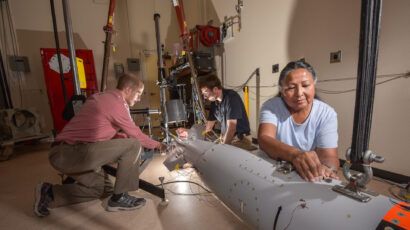Trump pulls US out of climate accord
By Dan Drollette Jr | June 2, 2017
In his usual decorous reality-show style, President Trump announced at 3 pm Thursday that he decided that the United States will pull out of the Paris Agreement on climate change.
But what does all this mean, and how would the mechanics of a pull-out actually take place?
There are several lines of thought, including one that says that it’s better that the United States pull out entirely, rather than stay in and give mere lip service to the agreement (while the Trump Administration does everything it can to undermine it and drop the financial aid that had been promised).
A good news analysis can be found on the New York Times front page.
An article on the BBC News site notes that the rules of the existing international treaty (which the United States had previously signed) are written in such a way that a formal pull-out could only take place in 2021 at the earliest, which would quite possibly be after Trump has left the presidency—even assuming he manages to complete a full first term. The article explores three or so other scenarios behind the mechanics of a pull-out.
And what would a pull-out mean for those who voted for Trump, such as coal-miners? A sharp and insightful analysis piece by Paul Krugman in the New York Times points out that even if the United States leaves the agreement, coal-mining jobs just ain’t gonna come back—despite the fervent wishes of Trump supporters. Natural gas is just too darn cheap, and automated mine equipment (think mountain-top removal) means that pick-and-shovel coal mining jobs are history. And more people these days are employed in solar than in coal, says Forbes magazine, a publication which describes itself as “a capitalist tool.”
Of course, some of us might be tempted to think that we can fix the mess left by Trump after he pulls out of Paris and the Earth has heated up even more than it already has. But technological fixes such as geoengineering just won’t cut it, said an article in the May 19 issue of the peer-reviewed journal Science. (A shorter synopsis is here.)
It’s now or never, when it comes to fighting climate change, sealevel rise, dying reefs, climate-induced mass migrations, the movement of tropical diseases into temperate zones, and all the other ills associated with global warming. Luckily, it looks like cities, states, and forward-looking companies will defy Trump and keep up the good fight, with states such as California standing out in this regard.
One other potential bright spot: It looks like China and India, the two other heavy hitters in carbon emissions, are starting to drop their usage of coal and instead invest in renewables. “This has led several economists and large US businesses to fret that the coming boom in solar, wind, and other renewable energies will not take place in the United States. China signaled its intent earlier this year by announcing it will invest $360 billion in renewable energy by 2020, creating more than 13 million jobs in the sector,” says this article in the Guardian.
Which is an ironic twist for a politician who claimed to make America first.
Publication Name: New York Times
To read what we're reading, click here
Together, we make the world safer.
The Bulletin elevates expert voices above the noise. But as an independent nonprofit organization, our operations depend on the support of readers like you. Help us continue to deliver quality journalism that holds leaders accountable. Your support of our work at any level is important. In return, we promise our coverage will be understandable, influential, vigilant, solution-oriented, and fair-minded. Together we can make a difference.
Topics: Climate Change, What We’re Reading















